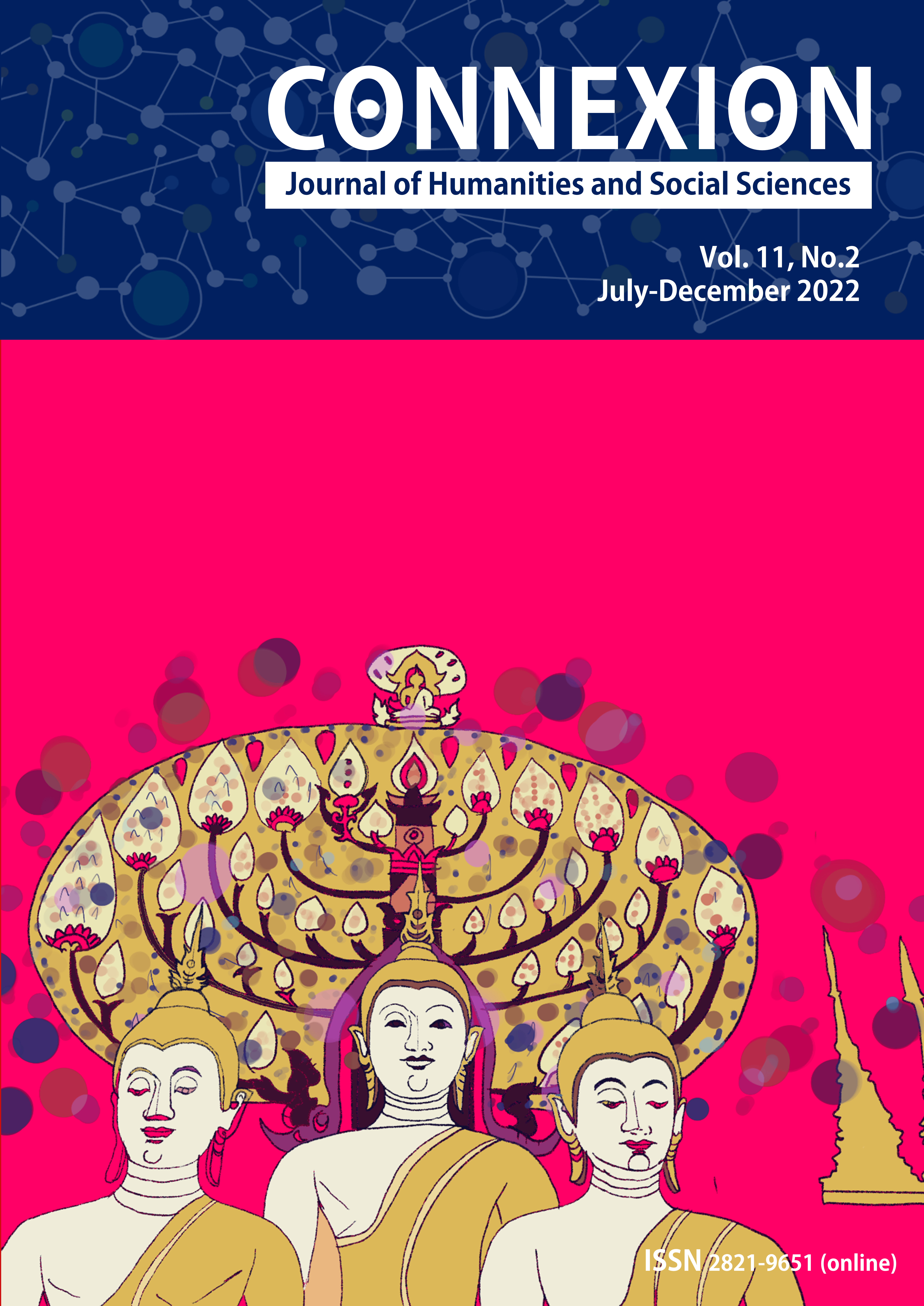The Development of Policy Guidelines for Carrying Capacity Assessment of Community Attractions
Main Article Content
Abstract
This research aims to assess carrying capacity model of community tourist attractions in the upper north region of Thailand and develop policy guidelines for carrying capacity assessment of community attractions. This research is carried out with mixed method and quantitative data were collected on assessing carrying capacity model of community tourist attractions in the upper north of Thailand, consisting of: (1) Ban Mae Kampong community; Chiang Mai Province (2) Bo Suak Community, Nan Province (3) Ban Tha Khanthong Chiang Rai Province and (4) Ban Rai Kong Khing Community Chiang Mai Province. Questionnaire was used as a tool to collect data from representative leaders of tourist attractions by the community and 20 representatives of community-based tourism groups using a specific sampling method, select only those who participated in community-based tourism management in the area of community-based tourism sites in the upper northern region and is a leading tool for assessing the carrying capacity of tourist attractions by the community and data were analyzed using descriptive statistics. For the qualitative data collection, this was a study on the development of policy proposals for assessing the carrying capacity of tourist attractions by the community. Specific group conversation record was used as a toll to collect data from 20 experts, by using a specific method for selecting the contributors from the eligibility criteria, which are qualified personnel and possess adequate expertise in assessing the carrying capacity of tourist attraction by the community, as well as having experience or research results in the development of tourist attractions by the community. Thus, they can be classified into 3 groups as follows: Group 1, government officials from tourism agencies, group 2, Scholars in community-based tourism Planning and Management, and group 3, community-based tourism networks in the North. Furthermore, the data was analyzed using content analysis.
The results of the carrying capacity model assessment of community tourist attractions in the upper north region of Thailand was found that carrying capacity assessment model of community based tourism in the upper north region in all four types, such as; eco-community based tourism attraction, cultural and handicraft community based tourism attraction, agro-community based tourism attraction, and health community based tourism attraction were appropriate at the high level to apply in their area context. The results of policy development proposals for carrying capacity assessment of community attractions can be classified into five areas, such as; Policy Proposal (1) Develop a tracking system and assess the carrying capacity to community tourist attractions (2) Integrating social capital benefits and community culture (3) Conservation of resources and ecosystems in local communities (4) Proper safety and wellbeing management, and (5) Coordination of conservation networks and research from stakeholders. The findings from this research reflect that group members in the community-based tourism model in the upper north of Thailand can appropriately apply the carrying capacity assessment model to support community-based tourism in their area context and in accordance with their area context. Furthermore, tourism authorities and a network of community-based tourist boards, can implement the policy proposals for planning and set up measures to monitor the expected impacts.
Article Details

This work is licensed under a Creative Commons Attribution-NonCommercial-NoDerivatives 4.0 International License.
Copyright
Connexion: Journal of Humanities and Social Sciences has an exclusive right to publish the accepted articles in any form. However, the author retains the following rights:
1. The right to the ownership of the article;
2. The right to use all or part of the article in his/her other works;
3. The right to re-produce the article for personal use or for use in the author’s organisation, in which case the author must obtain permission from Connexion: Journal of Humanities and Social Sciences;
4. The right to make copies of all or part of the work for educational use or for the author’s use in classroom teaching; and
5. The right to include the work (both the preprinted and printed versions) in an institutional repository.
References
Board of Directors of the National Tourism Policy. (2021) National Tourism Development Plan 2021-2022 (แผนพัฒนาการท่องเที่ยวแห่งชาติ พ.ศ. 2564-2565), Bangkok: Ministry of Tourism and Sports. (in Thai)
Butler, R. W. (2001) Seasonality in tourism: Issues and implications, Oxford: Pergamon.
Chansakun, A. (2018) Overtourism: Impact and management approach for sustainability (ผลกระทบและแนวทางการจัดการเพื่อความยั่งยืน), Songkhla: Bank of Thailand (The Southern Region Office). (in Thai)
Department of National Parks, Wildlife and Plant Conservation. (2005) Final report: Research project of carrying capacity in Khao Yai National Park (รายงานฉบับสุดท้าย โครงการขีดความสามารถในการรองรับได้ของพื้นที่อุทยานแห่งชาติเขาใหญ่), Bangkok: Department of National Parks, Wildlife and Plant Conservation. (in Thai)
Department of Tourism. (2021) Guide book: Safety zone criteria for tourist (คู่มือหลักเกณฑ์ด้านความปลอดภัยในพื้นที่ท่องเที่ยวปลอดภัย สำหรับนักท่องเที่ยว), Bangkok: Department of Tourism, Ministry of Tourism and Sports. (in Thai)
Designated Areas for Sustainable Tourism Administration (Public Organization). (2018) Global Sustainable Tourism Criteria: GSTC (เกณฑ์การท่องเที่ยวอย่างยั่งยืนโลก), Bangkok: Cocoon & Co Company Limited. (in Thai)
Global Sustainable Tourism Council (GSTC). (2020) The criteria for sustainable tourism version 2.0 (หลักเกณฑ์ และตัวชี้วัดหลักเกณฑ์ด้านการท่องเที่ยวอย่างยั่งยืนสำหรับแหล่งท่องเที่ยว เวอร์ชั่น 2.0), Available: https://www.gstcouncil.org/gstc-destination-criteria-v2-now-available-in-thai/ [6 October 2021]. (in Thai)
Leksakundilok, A. (2017) Tourism of the main attractions...don't be too big tourism: Super size me (การท่องเที่ยวของแหล่งท่องเที่ยวหลัก... อย่าให้ใหญ่เกินตัว), TAT Review, vol. 3, no. 3, Available: http://www.etatjournal.com/web/menu-read-tat/menu-2017/menu-32017/797-32017-super-size [20 June 2022] (in Thai)
Office of the National Economic and Social Development Council. (2021) Tourism policy in national strategy (แผนแม่บทภายใต้ยุทธศาสตร์ชาติ ประเด็นการท่องเที่ยว), Available: http://nscr.nesdc.go.th/masterplans-05/ [16 November 2022] (in Thai)
Phothisita, C. (2007) Qualitative research (ศาสตร์และศิลป์แห่งการวิจัยเชิงคุณภาพ), Bangkok: Amarin Printing and Publishing Public Company Limited. (in Thai)
Secretary of Ministry of Tourism and Sports. (2018) Final report: Action plan to drive sustainable and creative community-based tourism development project (รายงานฉบับสมบูรณ์ (Final Report) โครงการจัดทำแผนปฏิบัติการขับเคลื่อนการพัฒนาท่องเที่ยวโดยชุมชนอย่างยั่งยืนและสร้างสรรค์), Available: https://secretary.mots.go.th/ewtadmin/ewt/secretary/download/PDF/12_App2_Data_CBTDec2017_ North_84.pdf [20 June 2022] (in Thai)
Secretary of Ministry of Tourism and Sports. (2020) Tourism satellite account: TSA in 2020 (รายงานสรุปการจัดทำบัญชีประชาชาติด้านการท่องเที่ยว โครงการค่าใช้จ่ายในการพัฒนาและจัดทำบัญชีประชาชาติด้านการท่องเที่ยว ประจำปีงบประมาณ พ.ศ. 2563), Bangkok: Ministry of Tourism and Sports. (in Thai)
Sreshthaputra, S. (n.d.) Theory and concept in national development (ทฤษฎี และแนวคิดในการพัฒนาประเทศ), Chiang Mai: Chiang Mai University. (in Thai)
Wolters, T. M. (1991) Tourism carrying capacity, Paris: WTO/UNEP.


